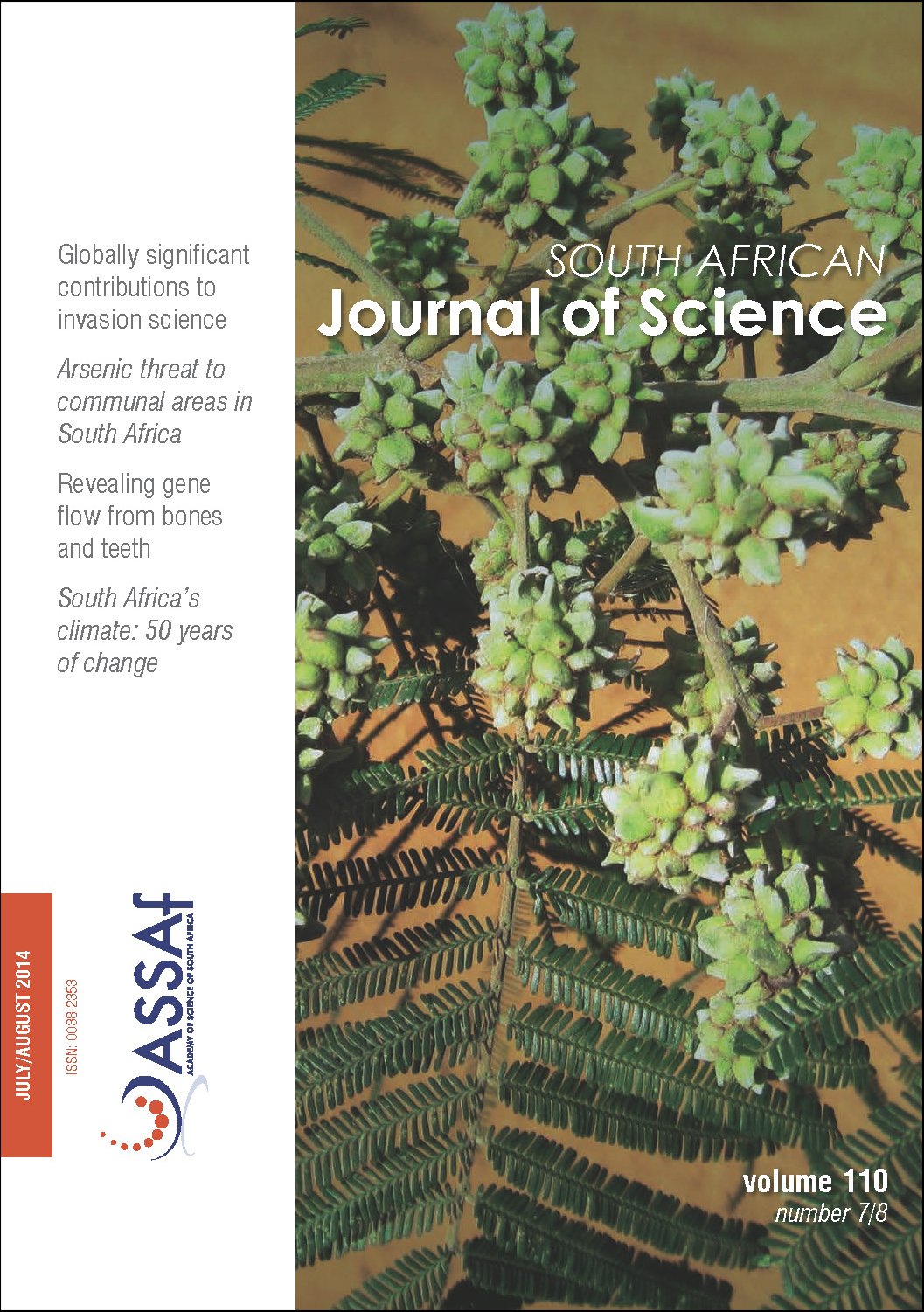Invasion science for society: A decade of contributions from the Centre for Invasion Biology
DOI:
https://doi.org/10.1590/sajs.2014/a0074Keywords:
invasive alien species, capacity building, biological invasions, Centres of Excellence, research strategyAbstract
Biological invasions are a growing problem worldwide. In 2004, the South African Department of Science and Technology, through the National Research Foundation, established a Centre of Excellence for Invasion Biology, with the primary goal of providing scientific understanding and building capacity in the field of biological invasions. South Africa is an extraordinary natural laboratory for the study of biological invasions, and the Centre for Invasion Biology (C·I·B) has capitalised on this situation. During its first decade, the C·I·B generated over 800 publications, and produced almost 200 graduates at honours, master’s and doctoral levels. The C·I·B has therefore made a considerable contribution to building human capacity in the field of biological invasions. Substantial advances have been made in all aspects of invasion science, which is not limited to biology and ecology, but includes history, sociology, economics and management. The knowledge generated by the C·I·B has been used to inform policy and improve management practices at national and local levels. The C·I·B has emerged as a leading institute in the global field of invasion biology, with several unique features that differentiate it from similar research institutes elsewhere. These features include a broad research focus that embraces environmental, social and economic facets, leading to a diverse research programme that has produced many integrated products; an extensive network of researchers with diverse interests, spread over a wide geographical range; and the production of policy- and management-relevant research products arising from the engaged nature of research conducted by the C∙I∙B.
Published
Issue
Section
License

This work is licensed under a Creative Commons Attribution 4.0 International License.

All articles are published under a Creative Commons Attribution 4.0 International Licence
Copyright is retained by the authors. Readers are welcome to reproduce, share and adapt the content without permission provided the source is attributed.
Disclaimer: The publisher and editors accept no responsibility for statements made by the authors
How to Cite
- Abstract 1297
- PDF 540
- EPUB 193
- XML 234












.png)